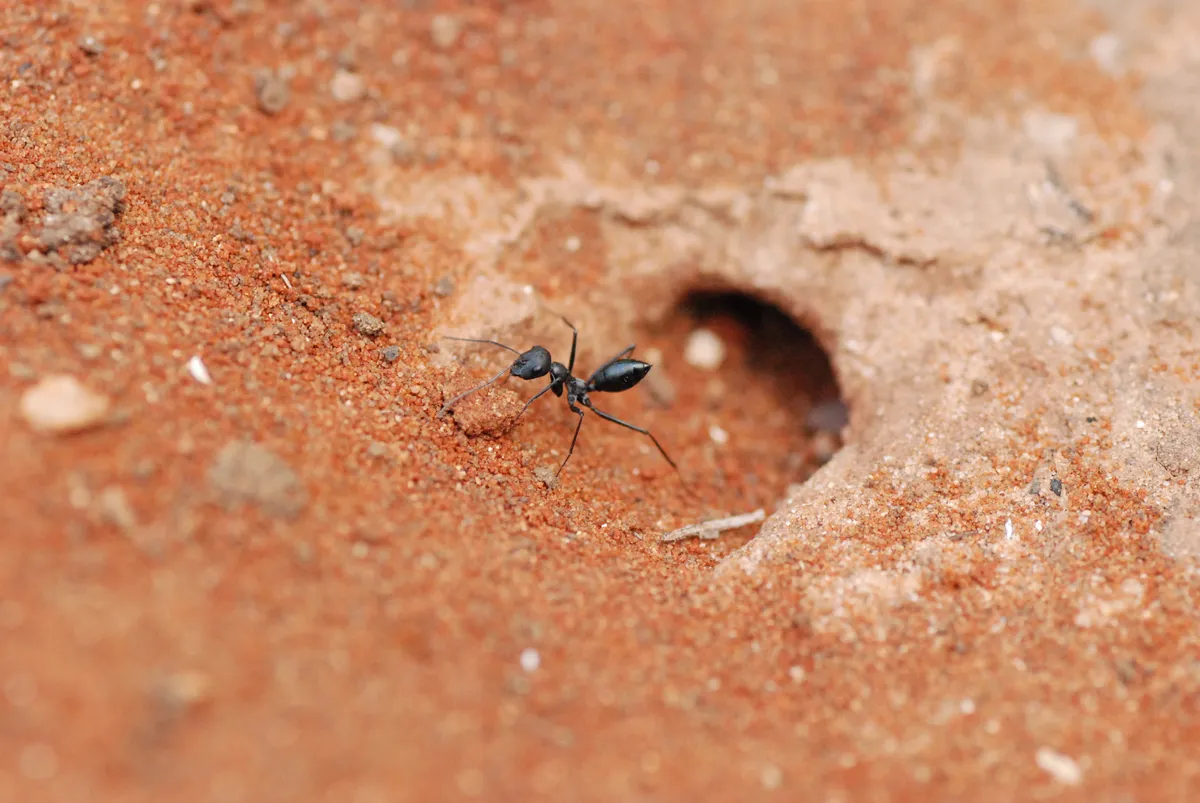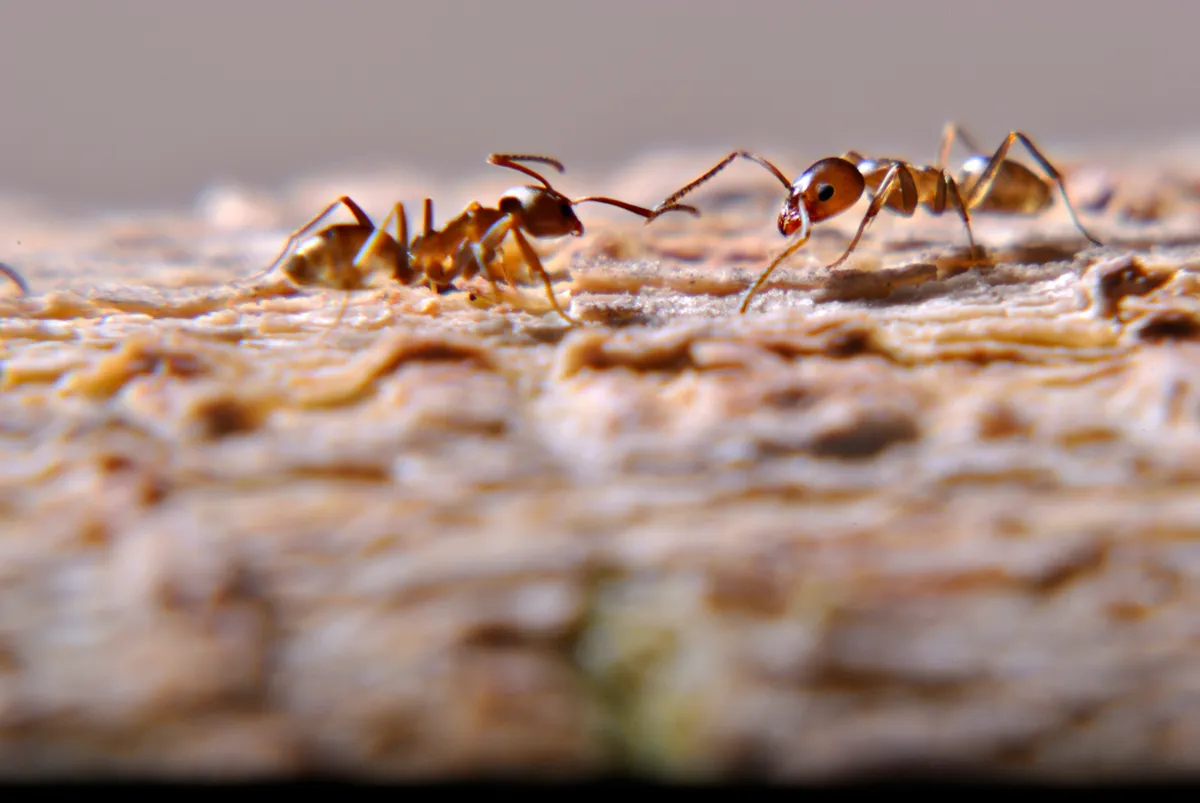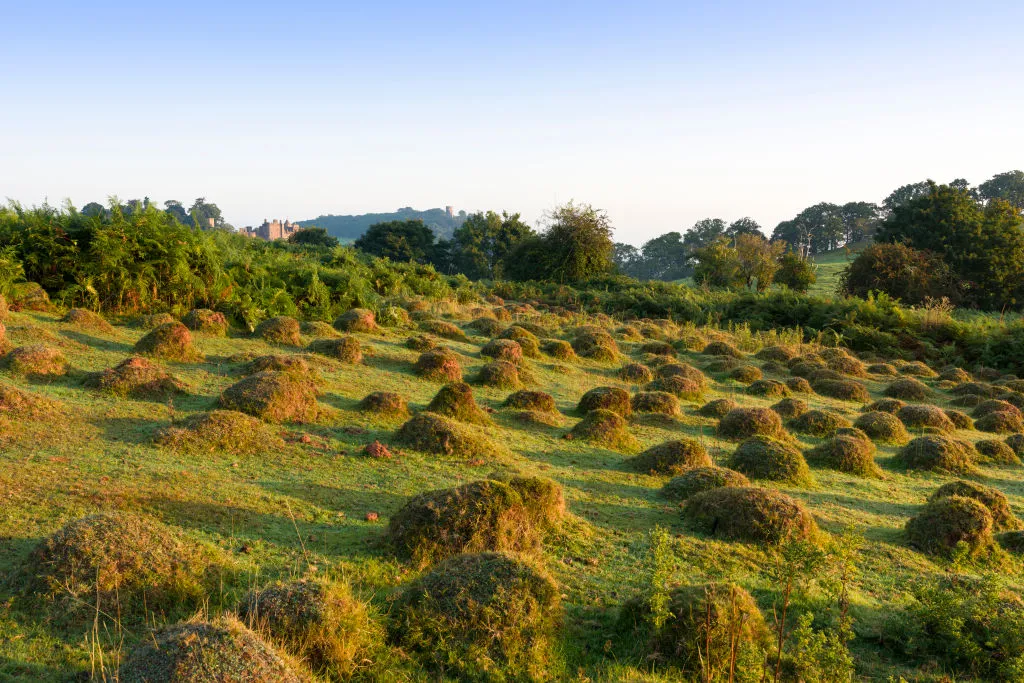What are ants?
Ants are insects that form the family Formicidae. Like the wasps, bees and sawflies, they are part of the Hymenoptera order. They are found throughout the world, with the exception of Antarctica and some remote islands.
It’s thought that there are 22,000 species of ants, although not all have been described by scientists.
Why do ants live in groups?
Ants are social animals which live in colonies usually controlled by a queen, or multiple queens – it varies between species. Ants within the colony have different roles, including workers and soldiers. This division of labour, as well as the constant communication between individuals, allows a colony to thrive.
Why do ants get stuck in death spirals?
Army ants (Eciton species in South America) and driver ants (Dorylus species in Africa) have huge itinerant colonies of up to 20 million individuals, centred on a series of semi-permanent nests and satellite roost stations. They forage in milling waves of activity, advancing on their prey (mostly insects, but also young or injured vertebrates) in broad military fronts and marching columns.
Like all ants they navigate from food source back to nest or overnight bivouac using chemical scent trails they lay on the forest floor. The heavier the traffic, the more powerfully this scent marker is reinforced. So good is this technique that workers of many species are completely blind, relying solely on smell to move around.
Sometimes a batch of many hundreds get separated from the main transport artery and double back on themselves, creating a circular path that they now follow slavishly. Unable to break free from their obligatory olfactory pursuit their blind faith impels them run themselves to exhaustion and eventual death.
How do ants create rafts?
Ants (like bees and wasps too) are thermophilic — they are lovers of warm and dry places. Well-drained sandy heaths and chalk downs are rich with them, but they avoid marshes and river banks. In rainforests they are mainly arboreal, avoiding the wet and often flooded forest floor.
However, even the best-placed nest can become inundated by flash flood or fickle water course. Quick action to move the brood to higher ground can work, but in extremis the South American fire ant (Solenopsis invicta) can cope with a completely flooded environment for several days. Many thousands of individuals grip together, holding tight to each other’s legs with their jaws.
The insects float off as a large irregularly shaped raft. They cling to any herbage they can find, or get wafted to. Hopefully they have enough colony members (including an egg-laying queen) ready to start another nest as soon as the water recedes or they make landfall at the edge of the flood.
How long can ants live?

Ants are small and vulnerable and its a bug-eat-bug world out there; nevertheless, life expectancy is not necessarily low. Mostly hidden safe in the subterranean nest, a worker (sterile female) of the black garden ant (Lasius niger) can expect to live 310–430 days, with up to 1129 recorded, though every foraging mission increases the chance of falling victim to an enemy, getting lost, or falling foul of inclement weather, even being washed away.
Winged males leaving the nest on flying ant day will be lucky to survive the night and most are dead by the following day. Their biological job, mating with a queen, is done and there is no evolutionary point in living longer.
The queen however, must support her colony by laying hundreds of eggs a day. She never leaves the safety of the nest. In the wild she will probably survive between five and seven years, but in a captive laboratory colony one queen lasted 29 years — the longest recorded life of any insect.
What are ant supercolonies?
The analogy that ant nests are like cities works well enough if that analogy evokes warring medieval city states constantly bickering over land and resources. As with humans, the greatest enemies of ants, are other ants, usually the same species. At the frontier they detect friend or foe by smell; this is genetically determined so that all worker sisters in the same nest have similar scents, unlike the smelly foreigners next door. Interlopers are repulsed — or their nutritious bodies are incorporated into the colony.

But when the Argentine ant (Linepithema humile) was accidentally introduced to Europe in the 19th century the population was founded on so few individuals that genetic diversity was extremely low. With the gene pool so shallow, all subsequent colonies are so closely related to each other that they do not recognise each other as enemies or competitors, just one big extended family. That family now runs along 6000 km of the coasts of Portugal, Spain, France and Italy and contains millions of interconnected nests and countless billions of happily cooperating sisters.
Why do birds participate in ‘anting’?
This behaviour has been recognised for nearly two centuries, and is readily seen in private gardens and public parks, as the bird fluffs up its feathers and rolls about in the grass. Though it has been observed in over 200 different bird species, nobody yet knows the full reason. There are several possible answers.
Formic acid sprayed by many species (black pavement ant, Lasius niger and red wood ant, Formica rufa, for instance) may be a feather conditioner, helping to keep the plumes in tip top aerodynamic condition.
Dust-bathing in similar (though ant-free) situations may have comparable grooming benefits. The ants may help the birds by removing lice and other parasites that elude normal preening.
Again, the formic acid may act as insecticide, fungicide or antibiotic, while large ferocious ants might actively attack the lice and fleas with their powerful jaws. Or it may be as simple as annoying the ants so they empty their formic acid reservoirs, before the bird eats a few.
How old are ant hills made by the yellow meadow ant?

The yellow meadow ant (Lasius flavus) excavates soil to create sheltered chambers and corridors inside its nest, and the spoil can build up over many years. Inside the mound the aphids feeding on the plant roots are tended by the ants. This intimate relationship has given rise to a well worn farming metaphor. The ants ‘milk’ the aphids for their sweet honeydew secretions (virtually unchanged from the sugary sap they suck), and they regularly cull the aphids for direct protein meals.
An ant hill is potentially immortal. As with honeybee colonies, workers can be replaced monthly, and queens every few years when they reach the natural end of their nest-bound egg-laying lives. So if undisturbed, nests can easily last for decades. A useful rule of thumb is 1 litre of soil thrown up per year. So, a nest the size of half a football is about 5 years old. One the size of half a smart car can easily have been there for over two centuries.
Do ants provide medical aid to each other?
Biologists have documented what is quite possibly the first example of animals administering first aid to others. Erik Frank of Germany’s University of Würzburg already knew that African Matabele ants carry their injured comrades back to the nest following battles with termites, which are prone to biting their legs off.
But Frank has since shown that they administer life-saving medical treatment, too, with nest- mates licking the wounds and limb stumps of fallen fighters. “We suppose that they do this to clean the wounds and maybe even apply antimicrobial substances with their saliva to reduce the risk of bacterial or fungal infection,” says Frank.
It certainly seems to work. While 80 per cent of wounded ants die without medical help, 90 per cent of treated ants pull through and rejoin the frontline.
But how injured does an ant have to be before it is regarded as a lost cause? Intriguingly, it’s not for the paramedics to decide. In what appears to be a noble act of selflessness, mortally wounded ants refuse to cooperate with their saviours – they even lash out at them violently to ensure the colony’s resources are not wasted on them.
Answered by Stuart Blackman.
Can ants use tools?
It is more than 60 years since Jane Goodall watched a chimpanzee fish for termites, and the number of species known to use tools has steadily grown. But, so far, tool use has been seen in few insects.
However, some ants can use tools. For example, the Mediterranean species Aphaenogaster subterranea drops bits of leaf into rotting fruit or carcasses, then carries the food- soaked debris back to its nest.
Answered by Ben Hoare.
Are termites ants?

Long known as ‘white ants’, termites also have large colonies with a disposable worker caste to forage, fight and build, and live in highly populous, complex semi- subterranean nests, overseen by a fertile, egg-laying queen.
But there are significant differences. In appearance, ants have a slim thorax, a tiny, hinge-like node segment at the waist, a bulbous abdomen and distinctive elbowed antennae. Termites have neither a narrow waist nor kinked antennae, nor do they have the sting or formic acid possessed of most ants.
Most importantly, newly hatched termites are miniature, mobile versions of the adults and immediately join in the nest processes, whereas ants have legless, maggot-like larvae that have to be fed by the workers until they are large enough to pupate for metamorphic transition into an adult.
Ants are related to bees and wasps, which also pass through larva and pupa stage before adulthood. Termites are actually social cockroaches.
Main image: Soldier army ants protecting the workers, in Lake Mburo National Park, Uganda. © Yannick Tylle/Getty
